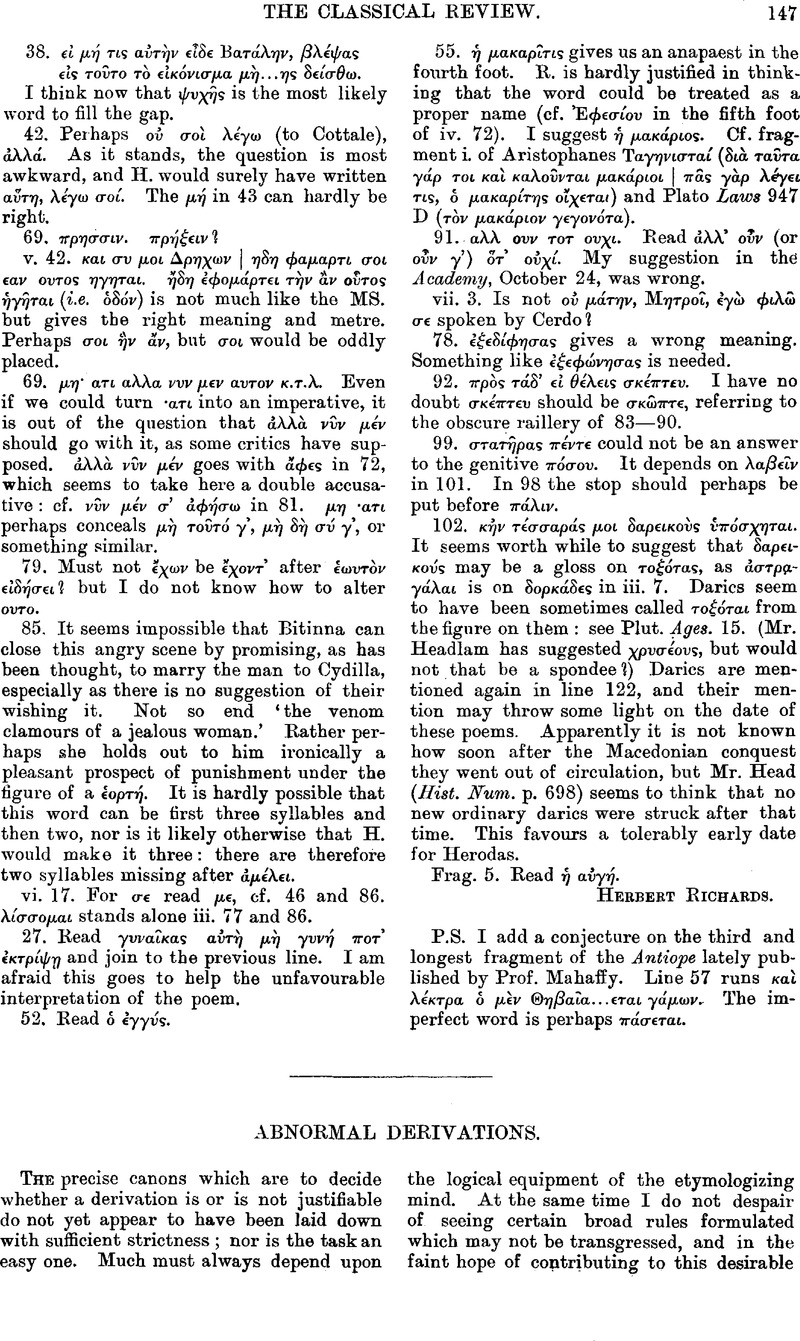No CrossRef data available.
Published online by Cambridge University Press: 27 October 2009

page 148 note 1 The Greek prototype of the Latin alphabet is probably to be seen on the Numasioi-inscription (Journ. Phil. xvi. 196). It bears a striking resemblance to that of Veii (cf. the table in Müller's Handb. vol. i.) and this is true of the Umbrian and Etruscan alphabets. We may therefore, I think, fairly regard the Greek alphabet in its Veian form as the parent of Italic alphabets proper. Geographical reasons also render this probable.
page 148 note 2 The answer to this may be that *cānimen *gēnimen were the forms; but this would need great hardihood.
page 148 note 3 L. L. vii. 3. p. 70 (Steph.). The passage is corrupt but I think it cannot be reasonably doubted that this is the sense. Curiously enough he goes on to derive cano from this same root cas.
page 149 note 1 κερω may also belong to this root. ![]() —κερω which becomes κερω as κτανω etc. became κτενω etc. Cf.
—κερω which becomes κερω as κτανω etc. became κτενω etc. Cf. ![]() —Lit. skiriu. The root was therefore s-kaxr, and gives also
—Lit. skiriu. The root was therefore s-kaxr, and gives also ![]() -corium, and
-corium, and ![]() -scortum. The guttural may have been velar, see Etyma Latina, s.vv.
-scortum. The guttural may have been velar, see Etyma Latina, s.vv.
page 149 note 2 Compare Brugmann's similar explanation of verna, Grds. ii. p. 137.
page 149 note 3 It is quite probable that the simple numeration from 1 to 24 preceded the more elaborate decimal system.
page 149 note 4 These were either one suffix by Ablaut, or three independent suffixes.
page 149 note 5 So regula implies linca, afterwards transferred to the instrument.